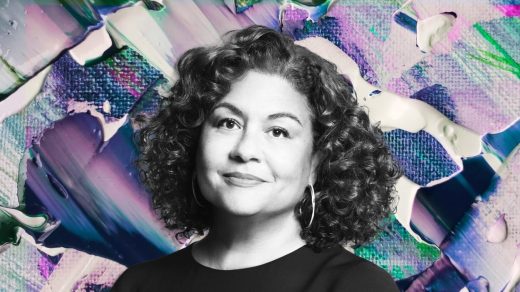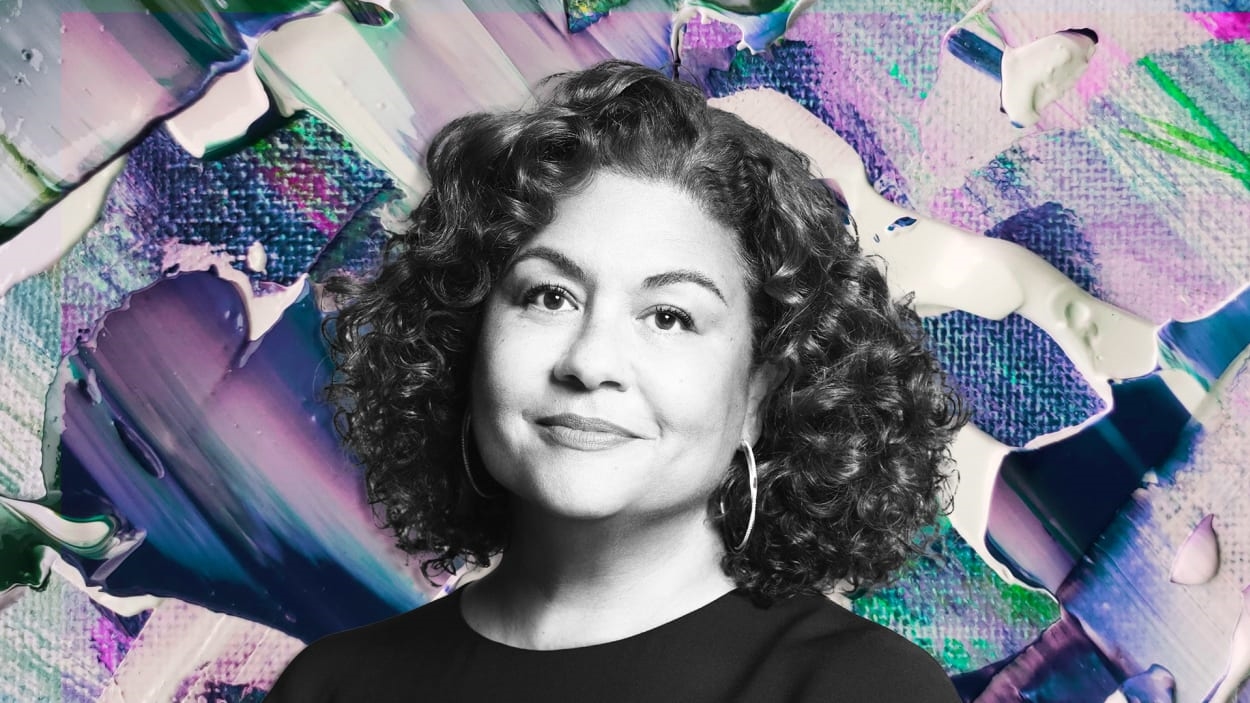How art can influence leadership and enhance collaboration
By Jenna Abdou
When I asked Elizabeth Alexander about her early artistic memories, she remembered “being filled with music” in her kindergarten ballet class. “You know the Degas dancers?” she asked me, lighting up as she reflected on the sculptures. “I’d go to The Hirshhorn Museum after school and visit the one with the tulle skirt that I loved so much. The museum was free. So, I thought of art as a friend; something I could go and visit.”
Art went on to be a vessel for Alexander. As a Pulitzer Prize finalist, she delivered the poem at President Obama’s inauguration, “Praise Song for the Day.” Through her teaching, most recently as the chair of African American Studies at Yale, literature is an invitation into our shared humanity.
Today, as president of the Mellon Foundation, the largest funder of the arts and humanities, creativity is an agent for change, following her boldly shifting their mission to center on social justice.
As both an artist and a champion of others, she shares how individuals and teams can harness art to better understand and contribute to our shared history.
Fast Company: The majority of artistic advice centers on expressing your truth. Yet, art is often most impactful when it captures the universal. How do you approach that dichotomy as an artist and when you’re encouraging the artists you support?
Elizabeth Alexander: Toni Morrison was so smart on this topic. She talked about the universal meaning that everyone is writing from a village. We all write from the intimate and the known. So, that’s her way of saying that all art aspires to universality in a way that can only happen when you start from the specific. It has to start from a place of finding the truth: What is the light that you’re trying to share? Then, what does your craft allow you to do with it? I think what is beautiful contains within it human exchange. In terms of my own writing, I gave you my words, and you told me that you saw your friend in them. Now, I’m back in it. Artistic exchange is a living experience. We give our souls and selves to each other in our words.
FC: I’m curious how you’ve seen this manifest in groups, whether in the classroom or at Mellon. What enables a group to create art that inspires real change?
EA: I’d start with groups where I’ve seen people be transformed by art. In my decades of teaching, the daily privilege was coming in with something I thought was extraordinary, putting it on the table, and saying: Here’s what I see. What do you all see? Let’s do this together. Then, seeing them take in and experience revelation as they grappled with a piece of art. They may or may not like it, but you see people changing.
We have The Monuments Project at Mellon. We could spend 10 minutes by the Watts Towers in Los Angeles or go to a museum, especially when kids are there, and ask: What does the art remind you of? How does it make you feel? It’s a beautiful everyday activity watching people be affected by art.
FC: How does your personal experience as an artist shape your leadership?
EA: Good artists have to be open to different ways of being and doing. I want people to come as they are and become even better in who they are. Things run best when we have different cultural backgrounds, disciplinary training, approaches, and styles. The way we express beauty and what we bring to this urgent work is unique. That’s what making art and encouraging people to make art is all about. Modeling that value and ethic at Mellon is important. I need everyone to feel like their contributions matter and that being at their individual best is how we’re going to be here. Saying that we would be a social justice philanthropy and helping to remake the organization wasn’t a piecemeal affair. It was an immersive creative act.
FC: You raise a meaningful question: How do we tell our stories with more than one thing being true at the same time? And, what would it mean? I’d love for you to illustrate what that might look like in our collaborations.
EA: From my lens as a poet, if a poem can’t hold contradiction and conflict, it’s not a very dynamic poem. This is where my background as a scholar in African American studies is relevant. I didn’t have to read anything that wasn’t written by a white man in my PhD education. I chose to, but I didn’t have to. But, what we know about history is that there were other people, right? What happens when you put their experiences onto the timeline? To me, it’s not even about whether there is conflict between what an enslaved person and an owner of slaves wanted out of life. They had different aims in 1830. But, they existed at the same time. So, you can’t just tell one story. Deep learning is hard. But, it’s not that hard once you start doing it. We can hold more than one story at the same time.
FC: Art and the humanities have never felt more vital than they do today, particularly with the rise of AI. How do you view art’s relation to what it means to be human, and what is our role in creating it?
EA: Art is the scaled way that we know what it is to be human. You and I can have a conversation and experience each other’s humanity. But, art allows us to do it larger, right? It will reach people who haven’t even been born yet and tell them something about our humanity today.
FC: Given our conversation, if you could leave us with one question to reflect on, what would it be?
EA: I would ask: How can we call on ourselves to experience things we don’t know—be it through art or ideas—and stay courageous in those encounters, even when we fear them? We’ll be estranged from each other if we don’t. We have to remember that moving toward each other is what we need not only to flourish, but to survive.
(13)



